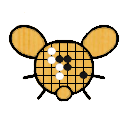This is from an exhibit at the Suzhou museum last year. The topic of the exhibit is - “Restoration of Peace, the Four Faces of Han Dynasty Civilization”, about archeological finds from Han Dynasty China near Suzhou.
The stones are made of a type of glass and not necessary “black and white” but blue and slightly yellow white. (or they might have been darker and lighter, but the colors degraded or changed over time). It was found in a tomb of a Han dynasty high royal prince. They didn’t find a board, but a cloth with lines drawn on it and too degraded to know how many lines it was.
So it is possible that we didn’t find many old game boards (or older than Han dynasty), not due to out of luck (or as some suggested Go was invented in Han dynasty), but because ancient players faced the same issue we are, and find it impractical to carry giant wood or stone slaps as gobans, and chose lighter materials like cloth or leather and draw grid on them as the board. Much cheaper and easier to produce.


I don’t know about their beliefs, but if the things are left for the deceased to use in the next life, then a Go set seems like the perfect thing to pack!
From what I’ve read, they (around Han dynasty) basically just put everything a person would use in life in their tomb, from vessels, house wares, daily objects, clothes, even food, wine, and figurines as servants, or if someone had a military position, their weapons, horses, armors, etc. So if someone loved to play Go in life, likely their family will put a Go set into the tomb. And they would even write what would go inside a tomb in a checklist and seal it in with the tomb as well, like helping the dead to organize and check if they miss anything.
The tradition of treating the dead family members like they were still alive, still persist today, like there is a special holiday (清明節) in every year, specifically for this purpose. We would visit those had passed away in their graveyards, organize and clean things up, and told them what had happened in the past year.